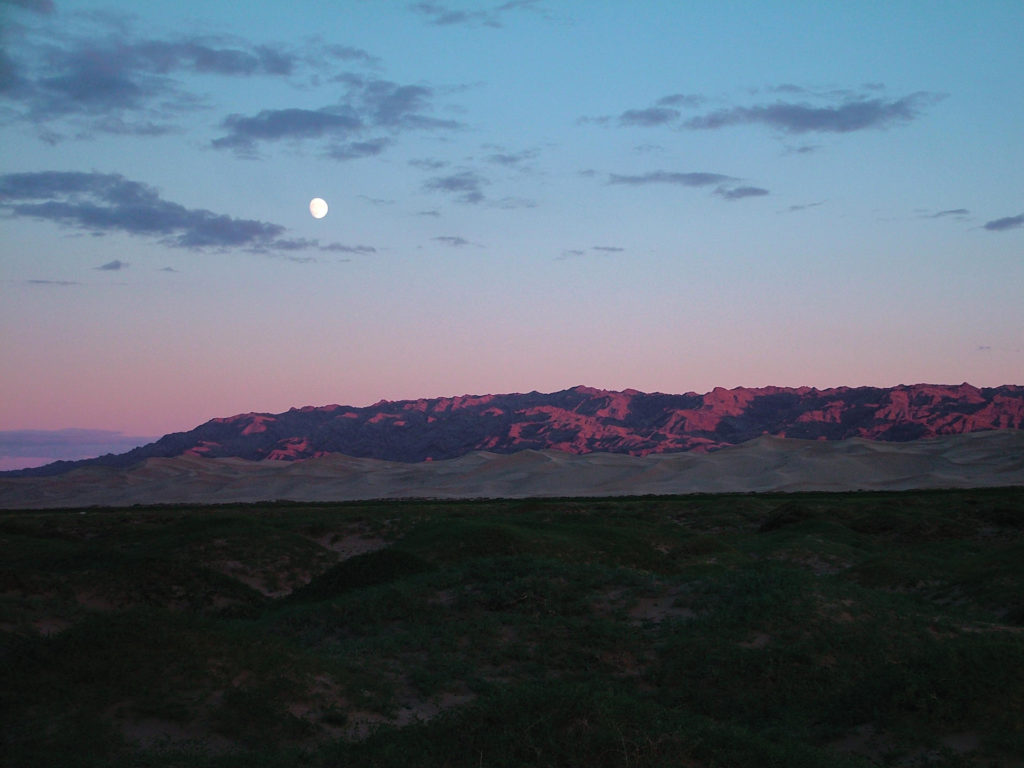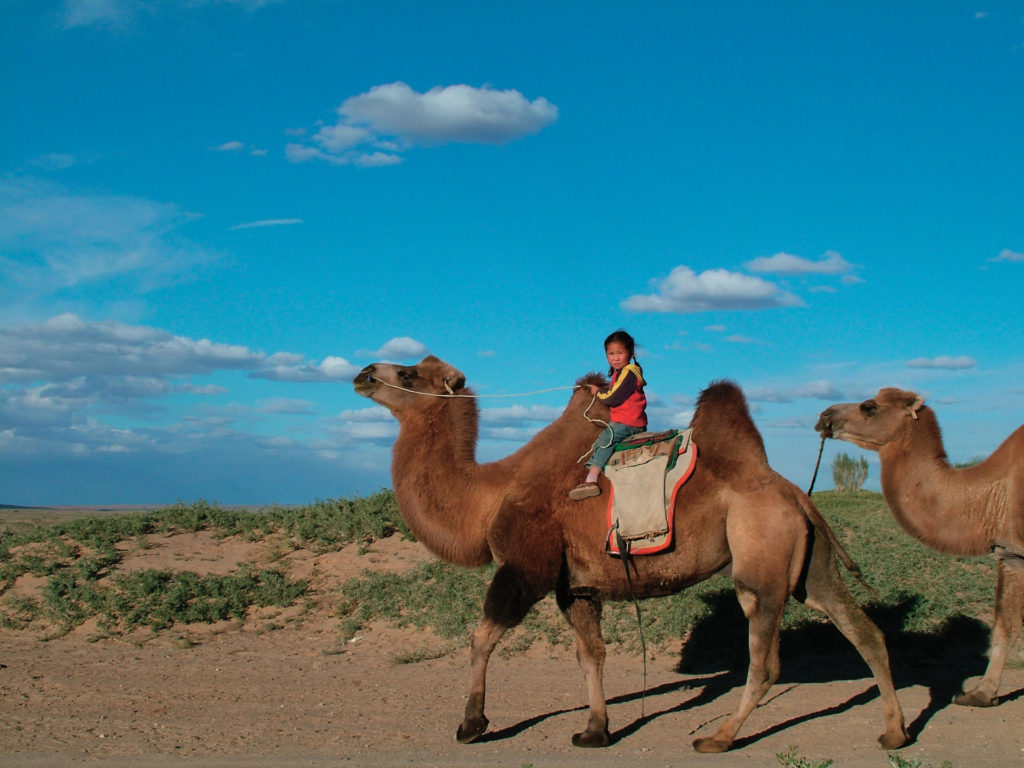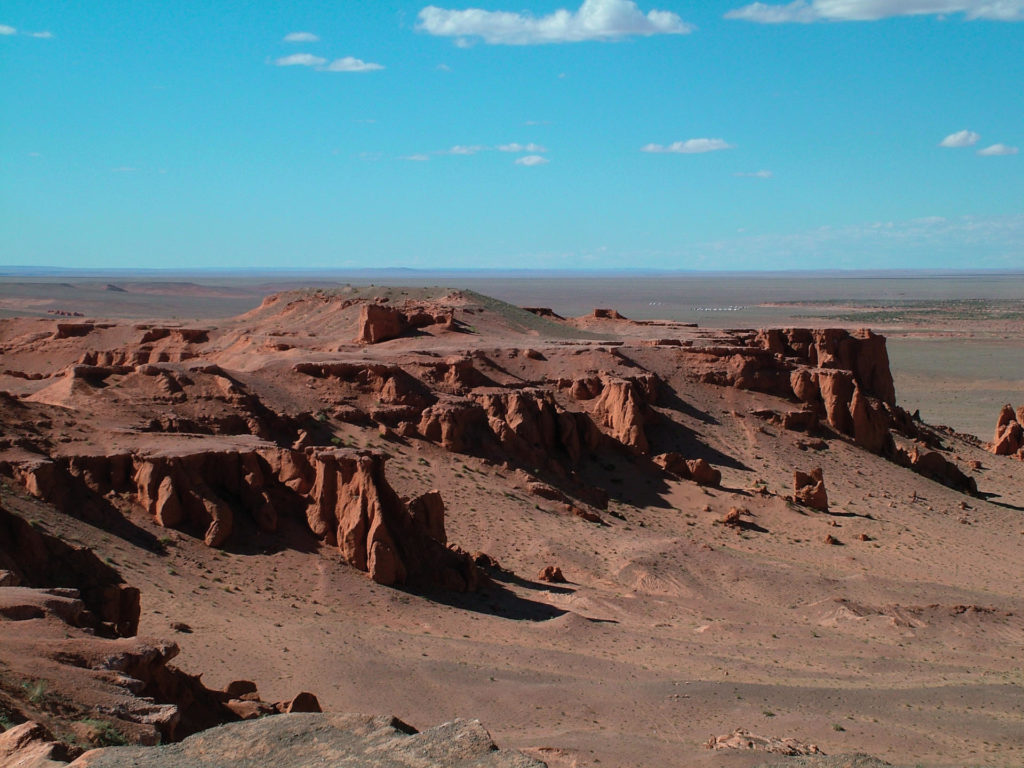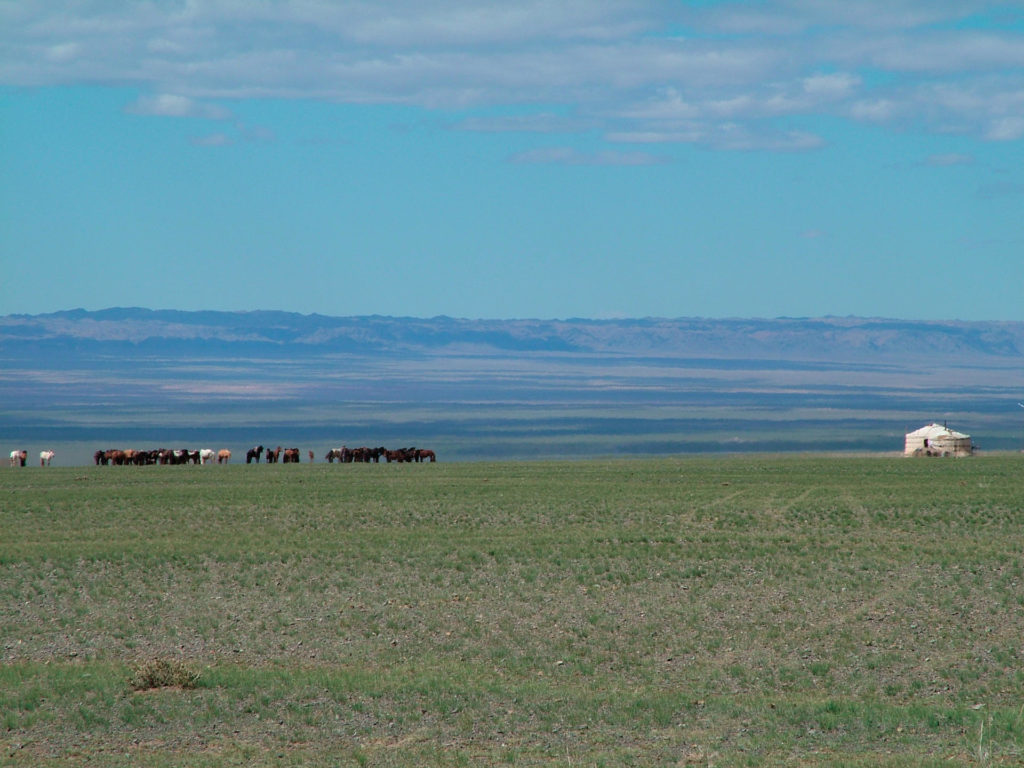Where can you find a moose and a camel? Snow in the summer time? Wash down horse milk cheese with homemade vodka? Live in a tent your whole life? Give up? Mongolia!

I’ve always loved to travel, to explore remote places and learn about new cultures but Mongolia had never really found its way onto my “list.” That is, until I moved to Sapporo, Japan, in September of 2000. After a few months of getting settled in Sapporo, winter soon came, and I was dazzled by constant snowfall. The snow seemed to be endless and quickly reawakened my interest in winter sports.
Some time around February or March of that year, I returned home from work to see my bicycle covered in a strange brownish dust. Initially I thought it just bad luck, but I soon realized all the cars had a thin covering of this strange dust. The next day I talked to a few people at work and learned this was the kousa (黄砂).
This fine sand is carried on strong winds across the Sea of Japan once or twice a year from China and parts of the Gobi Desert. What seemed common to the residents of Sapporo truly amazed me. I did some quick research and found this sand, and the encroaching desert accompanying it, causes major problems in Beijing and other cities in China. So began my interest in Mongolia; more specifically the Gobi Desert.
Growing up on the east coast of Canada, with the Atlantic Ocean literally just down the street, I always felt right at home near the sea. However, as much as I love the ocean, beaming with life, I’ve always been fascinated with deserts – the bareness, isolation and extremeness.
My first desert encounters were the Namib and Kalahari deserts in Africa. Seeing these natural works of art only fueled my desire to see more, and I knew I had to see the Gobi. It seemed to be calling to me all the way from Mongolia.
Landing in Ulan Baatar, I realized my dream after crossing various parts of Russia by train. I had allocated two and a half weeks for a trip into the Gobi but had no plan as to how it would proceed. I quickly found numerous agencies offering vehicles and drivers.
To save money, I paired with a Swiss couple I met who had similar aspirations. We ended up paying about $15 a day each for a driver who spoke no English and an old but comfortable Russian jeep. We had no concrete plan; only a few tents and a lot of tasteless food.
As we set off, it took about a day for us to truly feel as if we had left the capital behind. One of the first things we noticed was the lack of roads. To navigate across the vast steppe, our driver seemed to follow his instincts. Without him, we would have been completely lost.
Along the way we stopped at a few Ger, Mongolian style tents and washed down mutton fat with homemade vodka and cheese made from horse milk. Although communication was difficult, the people were very welcoming to us strangers and as interested in us as we were in them.
There is strict etiquette when in Mongolia, especially in a Ger. In a land so removed from modern amenities, it is easy to see why superstition plays such an important role. All of us were quite anxious about offending someone, but all went well, and people who in many cases had next to nothing, were extremely generous.

With the first days behind us, the landscape began to open. Words don’t do justice to the raw beauty of the area. I spent hours upon hours each day mesmerized as I stared out the windows of the jeep. I knew if I lived here, I would never need a TV again. However, I wondered what it must be like living in a place such as this.
There was scarce fauna, save the occasional wild camel or eagle, but every few hours we would see a lonely nomad and family with a herd of livestock. It was summer, and the day temperatures were 35 C, yet at night it sometimes snowed. Harsh doesn’t begin to describe what life must be like for these people, especially in the winter when temperatures regularly reach –40 C.
I pondered how things might be different if all the world leaders were required to spend a week living here as the nomads.
We ate when we were hungry, camped when we became tired and, with amazing deftness, our driver drove us deeper and deeper into the desert. We passed an occasional town and gas pump but so much of each day was filled with the stunning remote landscape.

Ninety percent of the Gobi Desert is not what people might think of as a desert, such as large dunes of sands found in Namibia or the Sahara. It is more of a flat, hard crust that covers the landscape with small shrubs and grasses. One small area, though, has the rolling dunes that epitomize deserts. We decided this would be our furthest point, as we still needed many days to return to the capital.
As we headed toward the dunes, we passed the site where Roy Champan Andrews discovered the world’s first dinosaur eggs. His adventures were later to be used as the basis for the now-famous “Indiana Jones” films. The area seemed to be a large hole cut into the landscape with red cliffs, and we at once felt as if we could peer into the past as we walked around the cliffs.
The next day we reached our destination. Upon seeing the dunes, we were awestruck by the contrast of the steppe and the sand. It is an image that will be etched in my memory forever. We ascended the dunes on camels and saw fresh signs of wolf in the area, just another reminder of the robustness of life in the extreme terrain.

That night cooking over an open fire under a full moon, we tried to absorb all we were feeling and had experienced. Within a few more short days we would be back in “civilization,” although we knew a little of Mongolia would stay with us forever.
Mongolia is truly a country of contrast and extremes. While the Gobi Desert dominates the south, the northwest resembles Canada with moose roaming the forests and swamps, and beavers damming the lakes full of large trout. Yet, the west borders the mountains of Kazakhstan where eagle hunters still live.
It felt to me as if Mongolia was just starting to become popular with tourists. Many Mongolians to whom I spoke welcome this influx as a possible source of income, as a lot are forced to leave their nomadic lives and look for work in the cities. They told me if tourists travel to remote areas of Mongolia, the money they bring could help sustain their lives.
I highly recommend a trip to Mongolia. Who knows? Maybe the next time you see the kousa, you too will hear the call of the desert.
Travel Info
Most excursions are arranged through the many tour agencies in Ulan Baatar around the center of town. Ask other travelers returning from trips for current recommendations. If you’re traveling alone or in a small group, it may be economical to visit some other guest houses and advertise for people willing to join your trip, but getting to know them first is always a good idea.
Due to the high turnover of accommodation, it’s best to consult the Internet or a current guide book for the most recent recommendations. Ulan Baatar is quite safe but, as in any city, use caution at night, travel in groups when possible and beware of pickpockets. The most comfortable time of year to go is summer, but some people who like extremes may want to see if they can survive the winter.
Getting There
From Tokyo, Mongolian Airlines (www.miat.com) operates a direct flight to Ulan Baatar. Other flights are possible via Seoul with Korean Airlines or from Beijing. The most scenic option is to travel to Beijing and take the train (about 28 hours), which affords great views of the Great Wall along the way. Whatever way choose, don’t forget to arrange visas well in advance.




